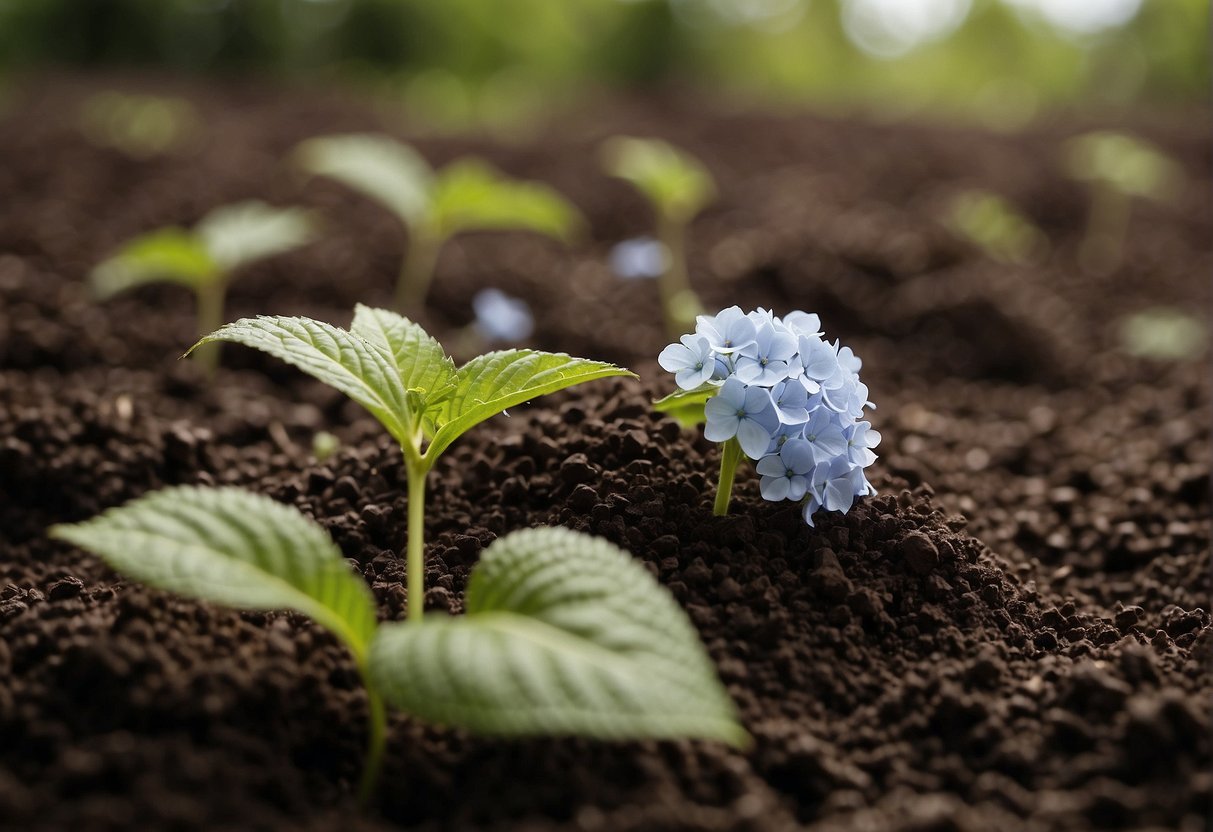- When to Plant Corn in San Diego: Optimal Seasons and Tips - July 19, 2024
- When to Plant Hydrangeas in Illinois: Best Timing for Optimal Growth - July 19, 2024
- Why Are My Radishes Growing Above Ground: Uncovering the Causes - July 19, 2024
As a gardening enthusiast, I’ve found that soil composition plays a crucial role in the health and bloom quality of hydrangeas. These ornamental plants are favored for their lush foliage and clusters of vibrant flowers, which enhance the beauty of gardens during the growing season. Achieving the ideal soil environment for hydrangeas is not just about nurturing their growth—it’s essential for those picture-perfect blooms.

In my experience, the key to cultivating thriving hydrangeas lies in understanding their soil preferences. These plants favor well-drained, rich loamy soil that retains moisture without becoming waterlogged. Additionally, soil pH significantly influences the color of the flowers, particularly for Bigleaf hydrangeas. A pH of 6.5 or lower will produce captivating blue flowers, while a pH above 6.5 will result in pink hues. This feature allows gardeners to play with their landscaping palette simply through pH adjustments.
Hydrangeas also exhibit a degree of soil adaptability, which suits gardeners with less than ideal conditions. Although they prefer loamy soil, they can tolerate clay or sandy soils if improved with organic matter like compost or peat moss. However, extremes in soil pH or poor drainage can be detrimental. It’s a delicate balance, but satisfying their soil preferences rewards you with stunning, healthy blooms that make your gardening efforts worthwhile.
JUMP TO TOPIC
Optimizing Soil Conditions for Hydrangeas
When it comes to nurturing hydrangeas, selecting and preparing the right soil is paramount. My focus is to provide you with targeted advice on creating the optimal environment for these lush blooms.
Assessing Soil Type and Composition
Understanding your garden’s soil type is crucial for hydrangeas. They flourish in rich, well-draining loam that is abundant in organic matter. If you’re working with heavy clay or sandy soil, you’ll want to enhance it. Adding organic matter such as compost, well-rotted manure, or peat moss improves texture and fertility. Aim for a balance of soil components as indicated in the table below:
| Soil Component | Percentage |
|---|---|
| Clay | Up to 30% |
| Sand | About 40% |
| Silt | 30-40% |
| Organic Matter | At least 5% |
Adjusting Soil pH for Vibrant Blooms
Hydrangeas are known for their color-changing abilities depending on soil pH. For blue blooms, aim for an acidic soil with a pH of around 5.5. Add sulfur or aluminum sulfate to decrease the pH. For pink flowers, the soil should be more alkaline, closer to a pH of 6.5 to 7. Incorporate lime to raise the pH if necessary. Consistently use a pH test kit to monitor and make adjustments for the desired flower color.
Enhancing Drainage and Moisture Retention
Hydrangeas need moist, but not waterlogged, conditions. To improve drainage and water retention, especially in clay soils, mix in coarse sand and organic materials like compost. If you’re establishing raised beds, they can provide improved drainage for your hydrangeas. Mulching around plants is also beneficial. It helps maintain soil moisture and temperature while preventing weed growth. An ideal mulch layer is 2 to 3 inches thick, which should be refreshed as needed to maintain its benefits.
Selecting and Planting Hydrangeas
Choosing the right hydrangea and planting it correctly are crucial steps to ensure a healthy and vibrant shrub. The plant’s success depends on the species selected and the care taken during the planting process.
Choosing the Right Hydrangea Species
I’m aware that hydrangeas come in various species, each with unique characteristics. The Bigleaf hydrangea (Hydrangea macrophylla), for instance, is known for its ability to change flower color based on soil pH. Acidity will give you blue flowers, while alkaline conditions turn them pink. For gardeners in colder regions, the Panicle (Hydrangea paniculata) and the Smooth hydrangeas (Hydrangea arborescens) are more cold-hardy and can tolerate a wide range of climate conditions. Those with smaller gardens might consider the Oakleaf hydrangea (Hydrangea quercifolia), which adds structure and texture to the garden without taking up as much space.
Best Practices for Planting and Establishing Shrubs
When I plant hydrangeas, I follow specific steps to ensure optimal health and growth:
Spring or fall are ideal for planting, taking advantage of the moist, warm soil conditions.
During planting, digging a hole as deep as the root ball and twice as wide is important to prevent crowding and encourage root spread. The incorporation of organic material into the planting site is beneficial for soil structure and provides nutrients.
💥 Quick Tip: Amending heavy soil with compost improves drainage, vital for preventing root diseases.
After planting, the focus should shift to establishing a strong root system. That means consistent watering, especially during the first growing season. Hydrangeas thrive on regular deep watering, which encourages the roots to grow deeper into the soil, thereby improving drought resistance and the overall hardiness of the shrub.
Maintaining Hydrangeas Throughout the Season
In my experience, the success of hydrangea care is contingent upon proper watering and fertilization. Navigate the specific needs during each growing stage.
Watering and Light Requirements
Hydrangeas demand consistent moisture. Water regularly, ensuring the soil is moist but not waterlogged. Twice a week works generally, but increase frequency during hot spells and reduce when they enter dormancy in late fall and winter. Full sun in the morning, with shade in the afternoon, is optimal.
Fertilization and Nutrient Management
I apply a balanced fertilizer rich in nitrogen, phosphorus, and potassium in spring to promote healthy growth and vibrant blooms. Manure and compost also enrich the soil. If I’m aiming for blue blooms, I’ll incorporate aluminum sulfate to reduce the pH. I avoid over-fertilizing to prevent damage.












